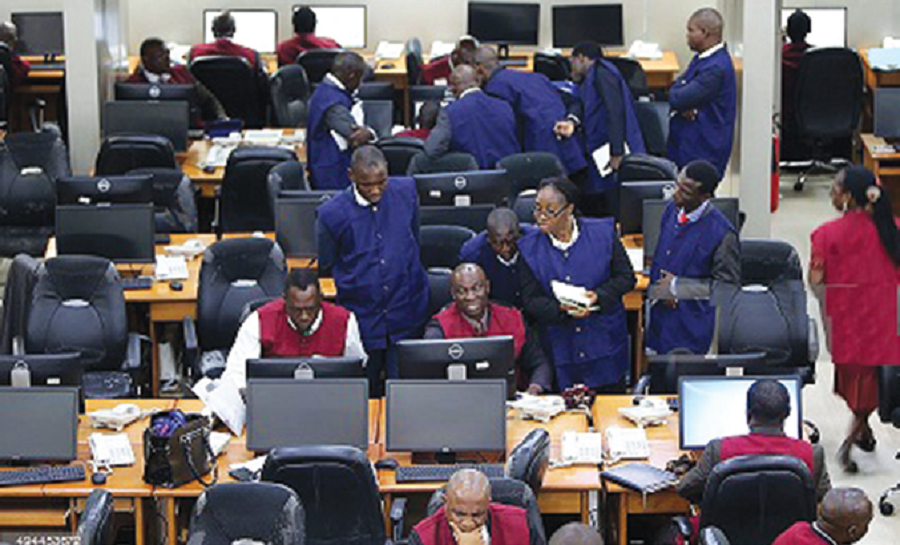Nigeria got her independence from Britain in 1960. A year later, on September 15, 1961, trading commenced on the Lagos Stock Exchange, later renamed the Nigerian Stock Exchange (NSE) with 19 securities listed, 3 equities, 6 FG bonds, and 10 industrial loans
As of Q2 2020, the NSE is one of the largest in Africa, with 366 listed securities and a market capitalization of $74 billion, which is an 11.23% growth from last year. Average daily transactions grew by 19.64% from last year, these are positives for the NSE. A red flag observed, was the exit of foreign investors, which has continued since 2018 from 50.70% to 39.52%. In dollar terms, this is a fall in transactions from $3.35 billion to $1.03 billion.
READ: Data war: MTN gains 1.69 million subscribers, as Airtel dusts Glo, 9mobile in July
The NSE has been somewhat of a barometer of the Nigerian economy, tracking the different economic models of the government of the day. As Nigeria reaches the 60th year of her independence, it is imperative to review the NSE, considering these key national economic events.
The first big legislation to affect the NSE, was the 1972 indigenization policy in the Nigerian Enterprises Promotion Decrees (NEPC). The purpose of the law was to transfer ownership of foreign-owned firms, listed and/or operating in Nigeria, from foreigners to Nigerians. In banking for instance, Nigerians were to own 60% equity in any bank operating in Nigeria. This policy had its positives and negatives, from just six (6) companies listed from 1960 to 1969, eighty-four (84) firms were listed in the period from 1970 to 1979, mostly in Consumer and Industrial goods, and healthcare. Other policies, including the Income Tax Management Act of 1961 and The Insurance Miscellaneous Provisions Act of 1964, mandated pension and provident schemes to invest at least one third and a quarter of their funds respectively, in Nigerian Government Stocks. The NEPC can be argued to have set up the NSE for growth.
READ: Nigerian banks top list of NSE companies with highest employees
The NEPC, though well-intended, did cause some divestment, especially in financial services. Many banks including Citibank and Standard Chartered completely left Nigeria, others like Chase Manhattan and Bank of America, sold 60% equity and changed their names. The effect of this reduction in majority ownership by large Western banks was that Nigeria lost local credit access to foreign-owned banks. The New York Times article in 1976, asserted that the policy of ‘indigenization’, “will discourage the flow of investment capital to Africa’s biggest marketplace, Nigeria.”
The lasting effect of this divestment was that as federal borrowing increased, the NSE was unable to meet the liquidity needs of the FGN, and the CBN stepped in, funding the government via ways and means in significant amounts, even to this day.
Another positive from the NEPC, was the creation by the NSE, of the Second Tier Securities Market, which allowed Small and Medium enterprises to access the stock market for funds, expansion, and price discovery.
The next big policy change was the Structural Adjustment Program of 1986 (SAP). As oil prices crashed in the late 1980s, Nigeria ran into significant current account deficits, with crude oil gone temporarily as a source of foreign exchange income. SAP, with structural reforms overseen by the IMF and World Bank, called for liberalization of the Nigerian markets and enhancing the rights of foreign investors. Hence, the NEPC was repealed, the economy was liberalized, then privatization and commercialization of government-owned enterprises soared. This SAP period coincided with a rise in the number of listed companies from 42 in 1978 to 196 in 1999. Its growth was driven by the listing of new banks and financial services; almost 100 new listings, and a direct consequence of the SAP liberalization.
The third big action was a return to democracy in 1999, this enhanced and attracted new capital market flows to Nigeria. Another key positive that has impacted the NSE has been the pension reforms, which have given the market a steady source of long-term financing. As of 30th June 2020, the Pension Asset Managers have about N9trillion of various asset classes, listed on the NSE.
The Challenge
The NSE has from 1961 to 2019, delisted a total of 150 companies, mostly from Financial Services, and Industrial and Commercial goods. To be specific, the NSE has shrunk the number of equities listed, from a high of 217 in 2010 to 163 as of June 2020. Although, the reason for delisting is largely regulatory in financial services. The Securities and Exchange Commission of Nigeria, warns that the NSE must seek to remain relevant, by having more companies listed.
This is the challenge for the NSE going forward; how to attract more companies to list and become a part of her.
Happy Birthday Nigeria!





















